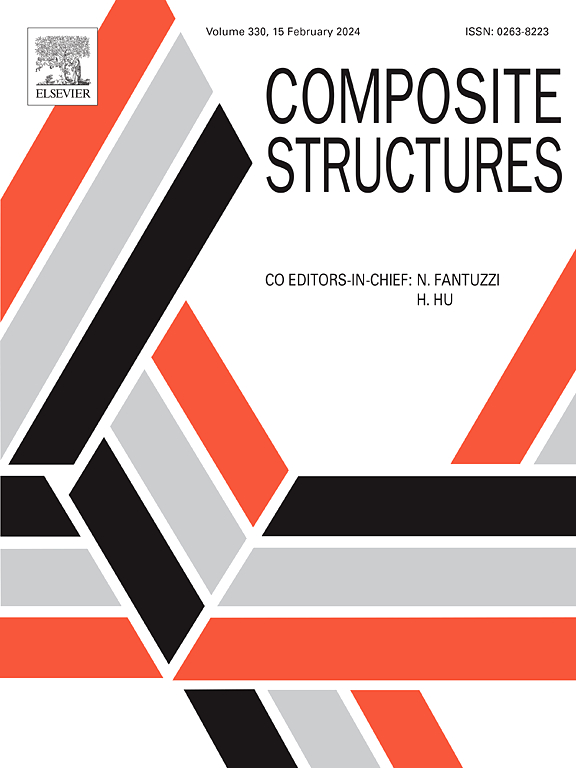Multiscale experimental characterization of nonlinear mechanics and auxeticity in mechanical metamaterials with rotating squares
IF 6.3
2区 材料科学
Q1 MATERIALS SCIENCE, COMPOSITES
引用次数: 0
Abstract
Auxetic (negative Poisson’s ratio) structures made from rotating squares have attracted considerable attention due to their tunable shape control, strength, and strain energy absorption capacity. The present study aims to explore the interrelations between mesoscale kinematics and the macroscopic mechanical behavior of additively manufactured rotating-square auxetics under compressive loads. Specifically, correlations between the rotational degree of freedom of the squares, mechanical deformation of the cell hinges, and the macroscopic nonlinear mechanical and Poisson’s behaviors are investigated using experimental measurements supplemented by mathematical models. Structures with variable cell hinge thicknesses are fabricated by stereolithography additive manufacturing technique and then subjected to compressive loads applied at quasi-static and dynamic conditions with several orders of magnitude difference in strain rate. Multiscale mechanical deformation of the structure in each case is analyzed using digital image correlation (DIC). Experimental characterizations indicate strongly nonlinear and rate-sensitive auxetic behaviors in the examined structures. The role of cell hinge thickness is discussed in terms of the mechanical constraint that these components impose on the rotational degree of freedom of the solid squares in the structure, concurrently causing a nonlinear strain hardening behavior.
求助全文
约1分钟内获得全文
求助全文
来源期刊

Composite Structures
工程技术-材料科学:复合
CiteScore
12.00
自引率
12.70%
发文量
1246
审稿时长
78 days
期刊介绍:
The past few decades have seen outstanding advances in the use of composite materials in structural applications. There can be little doubt that, within engineering circles, composites have revolutionised traditional design concepts and made possible an unparalleled range of new and exciting possibilities as viable materials for construction. Composite Structures, an International Journal, disseminates knowledge between users, manufacturers, designers and researchers involved in structures or structural components manufactured using composite materials.
The journal publishes papers which contribute to knowledge in the use of composite materials in engineering structures. Papers deal with design, research and development studies, experimental investigations, theoretical analysis and fabrication techniques relevant to the application of composites in load-bearing components for assemblies, ranging from individual components such as plates and shells to complete composite structures.
 求助内容:
求助内容: 应助结果提醒方式:
应助结果提醒方式:


